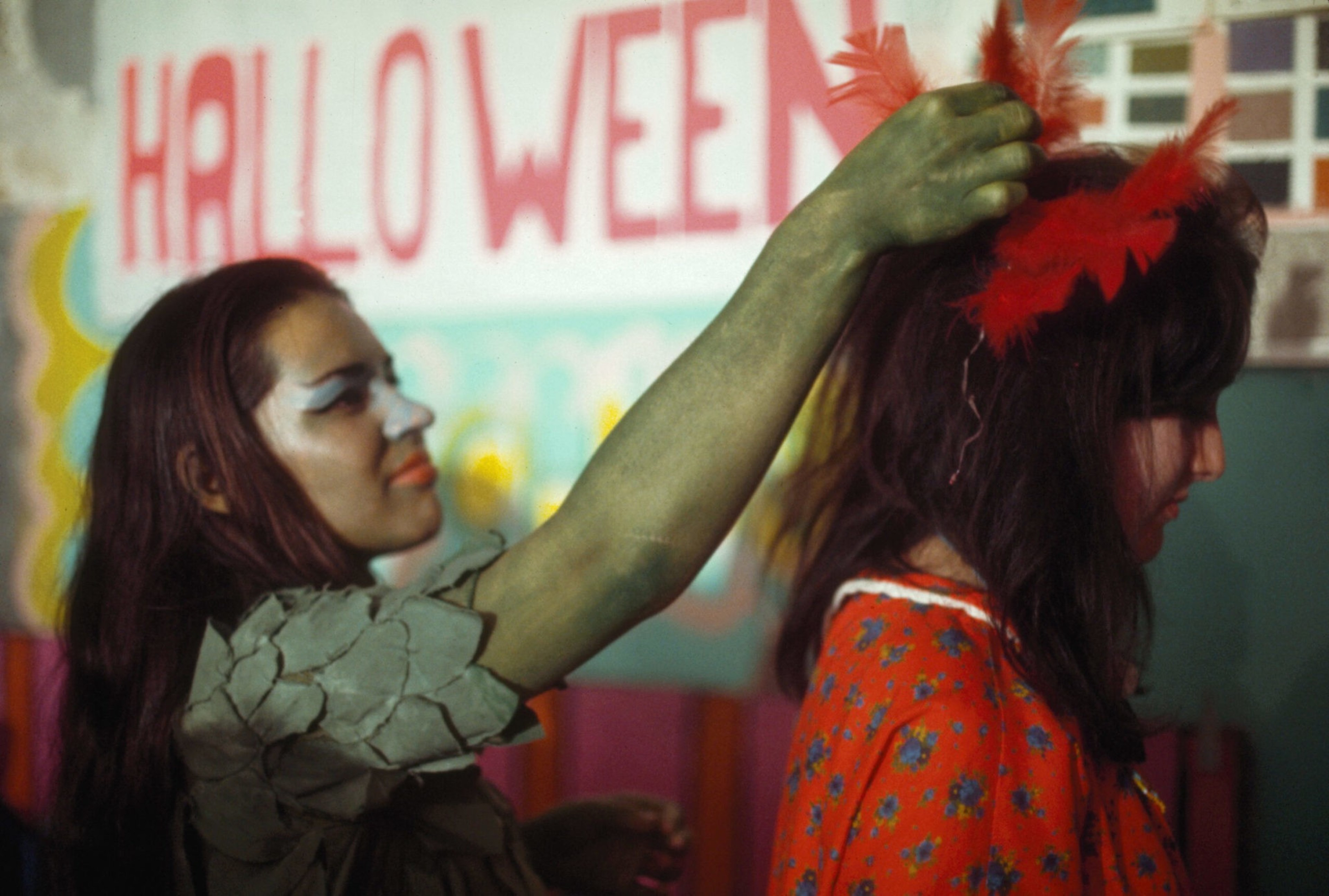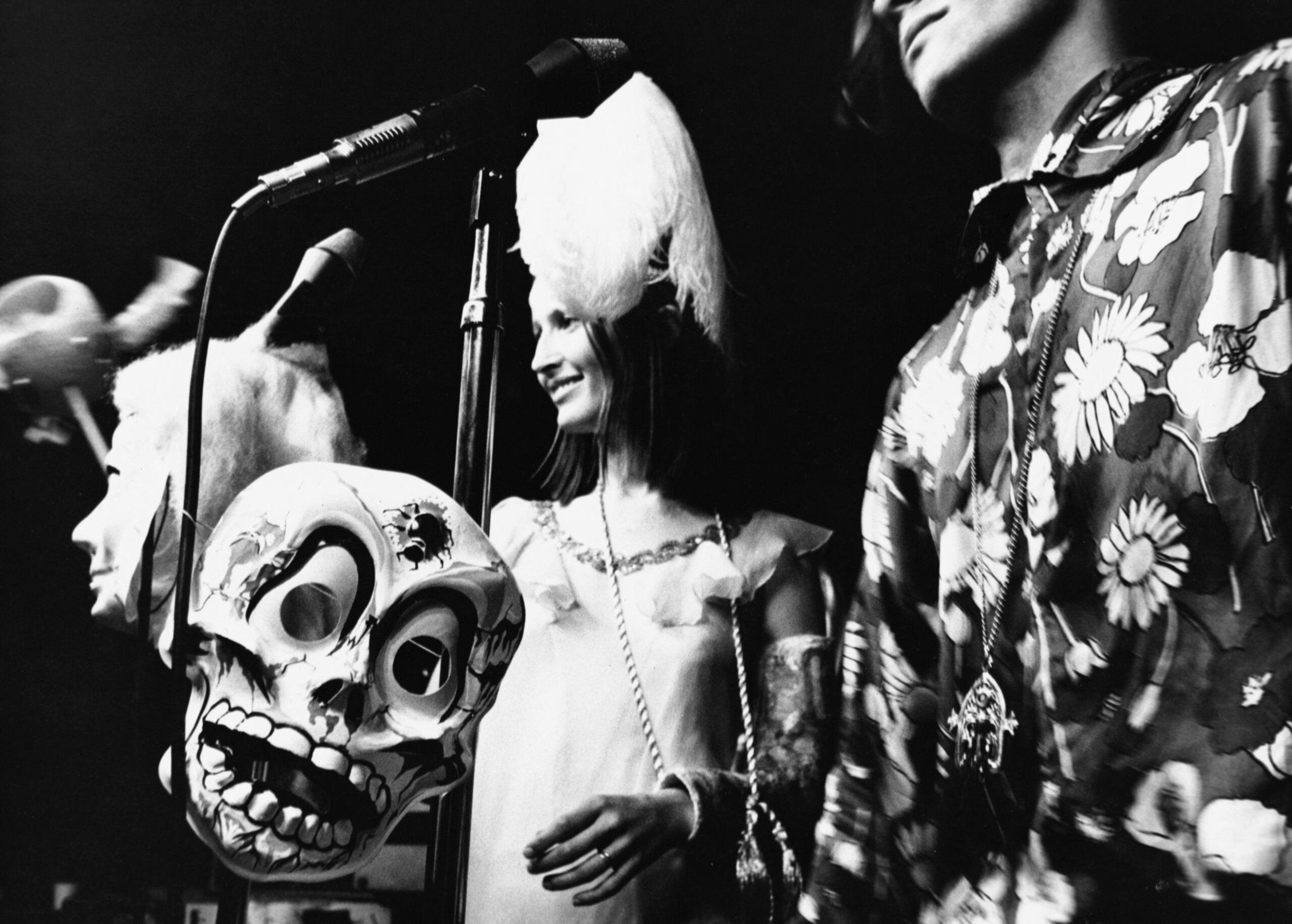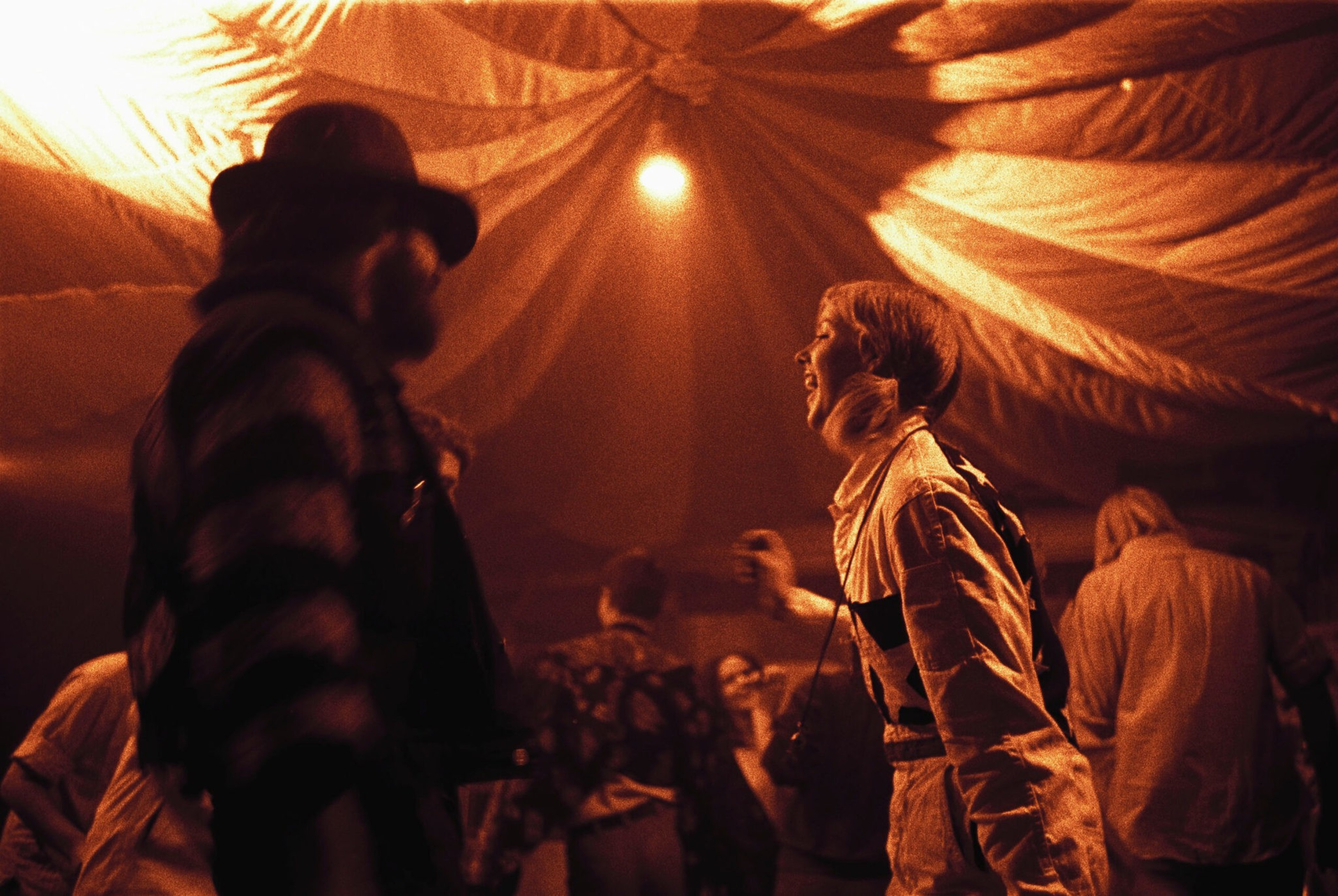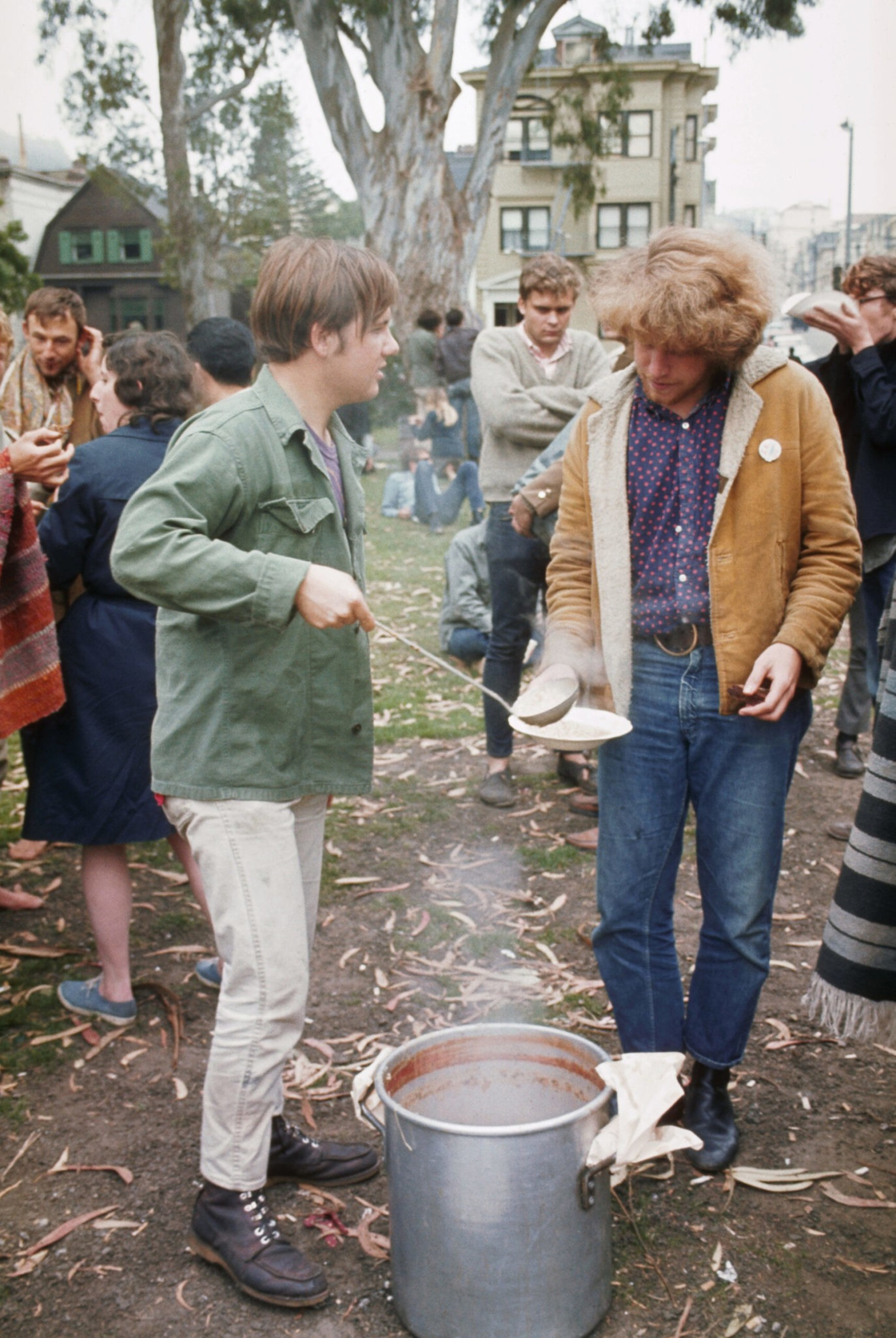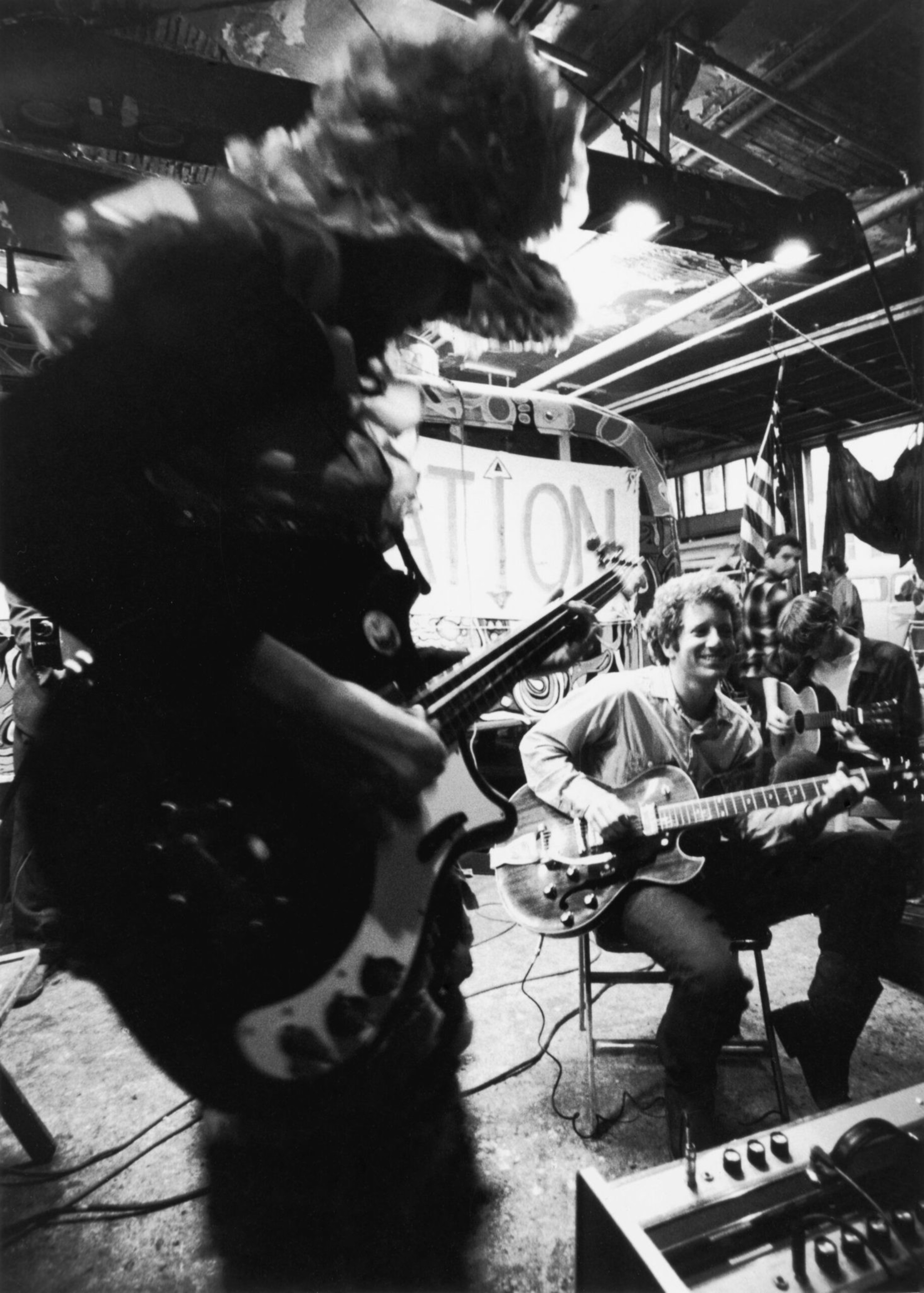Gallery of 10 photos
the slideshow
At the end of his stranger-than-fiction account of the 1960s counterculture, “The Electric Kool-Aid Acid Test,” Tom Wolfe devotes a few surrealistic pages to the events of Halloween 1966. That night, Ken Kesey and his Merry Pranksters took over a warehouse in SoMa for a festival they called “Trip-or-Treat.” Wolfe’s chapter, much like the rest of his novelistic journalism, leaves us with more questions than answers.
In October of 1966, San Francisco’s counterculture was at a figurative and literal crossroads. On Halloween night, that warehouse full of flower children chose to turn away from acid, while a troupe of thespian food activists overtook Haight-Ashbury to reclaim the streets for the people.
If you made it through Wolfe’s book, or even the opening pages, you know that LSD was the San Francisco hippie’s psychedelic drug of choice in 1966. Kesey, the Beat Generation novelist who rose to fame by exposing the horrors of America’s psychiatric hospitals in “One Flew Over the Cuckoo’s Nest,” earned the nickname “the Acid Christ” for hosting frenzied parties where he would hand out tabs of acid and teach his disciples how to tune in, turn on and drop out.
Kesey and his followers, the so-called “Merry Pranksters,” hosted the first acid test in the Santa Cruz County town of Soquel in November 1965. Two months later, they debuted their “permissive bedlam” in San Francisco. That night, the acid tests’ official house band, The Grateful Dead, jammed for an audience of fellow travelers at the Fillmore.
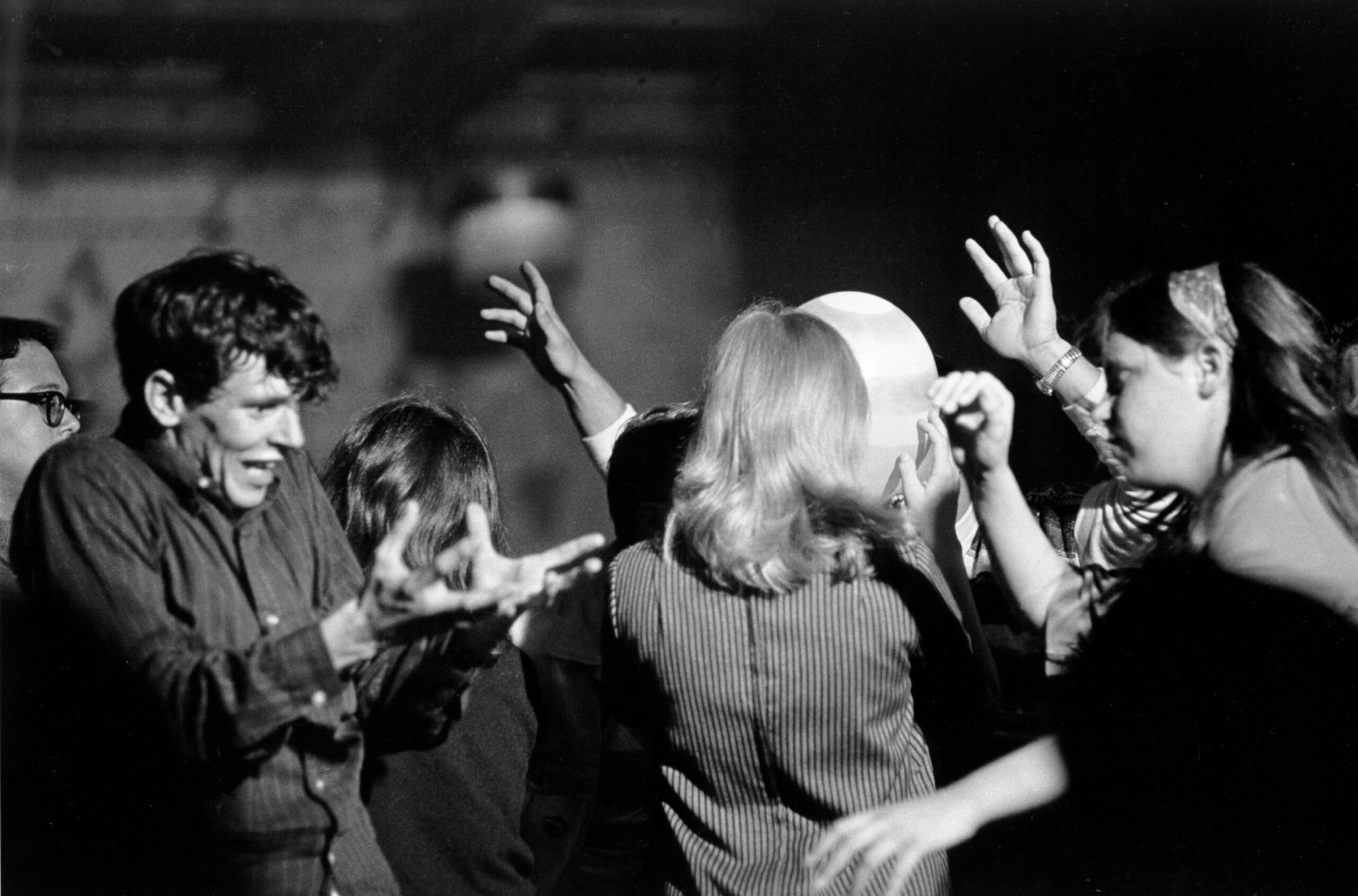
By fall of that year, the fever dream had broken. After spending 90 days in prison on marijuana charges, Kesey was set to go to trial. On Oct. 6, 1966, the U.S. banned LSD. Kesey and the Merry Pranksters resolved to host one last bash, and Halloween seemed the ideal night for the first and only “Trip-or-Treat Festival.”
They gathered a throng of hippies at a warehouse on Harriet Street in SoMa and handed out college diplomas. Now, these flower children weren’t graduating from San Francisco State or University of California Berkeley—or any accredited institution, for that matter. They were celebrating the Acid Test Graduation, or what Wolfe called “the collapse of the Prankster Winterland fantasy.”
As The Chronicle reported, on Halloween night the Merry Pranksters vowed to get high on life, not on drugs. Kesey wanted his followers to graduate from acid use, and if they did, Neal Cassady—the Beat who inspired one of the main characters in Jack Kerouac’s On the Road—would reward them with a diploma. It’s unclear if Kesey’s time in lockup had scared him straight, but he said he wanted his followers to learn from his mistakes. “I’m trying to tread a very thin line,” he told The Chronicle. “If I go too far one way, they’ll put me in jail. If I go too far from the other way, the (acid) heads will say, ‘He’s copping out.’”
Kesey expected thousands to rise for this wake-up call, but only a couple hundred costumed hippies came out to Harriet Street, even though Kesey had recruited The Grateful Dead to play at the party and spread rumors that LSD apostle Timothy Leary would be there. Wolfe lamented the end of the acid test era in his book, writing, “The straight world breathes in, coughs, gags, spaghetti trapped in every glottis and flapping in panic …”
Strong words, maybe, but San Francisco’s counterculture was certainly at a turning point. There was also another bizarre happening across town in the Haight that drew a much larger crowd. A critical mass of hippies swarmed the soon-to-be legendary intersection of Haight and Ashbury streets, where a collective of food activists and thespians called the Diggers had assembled a 25-foot wooden frame and two 8-foot puppets.
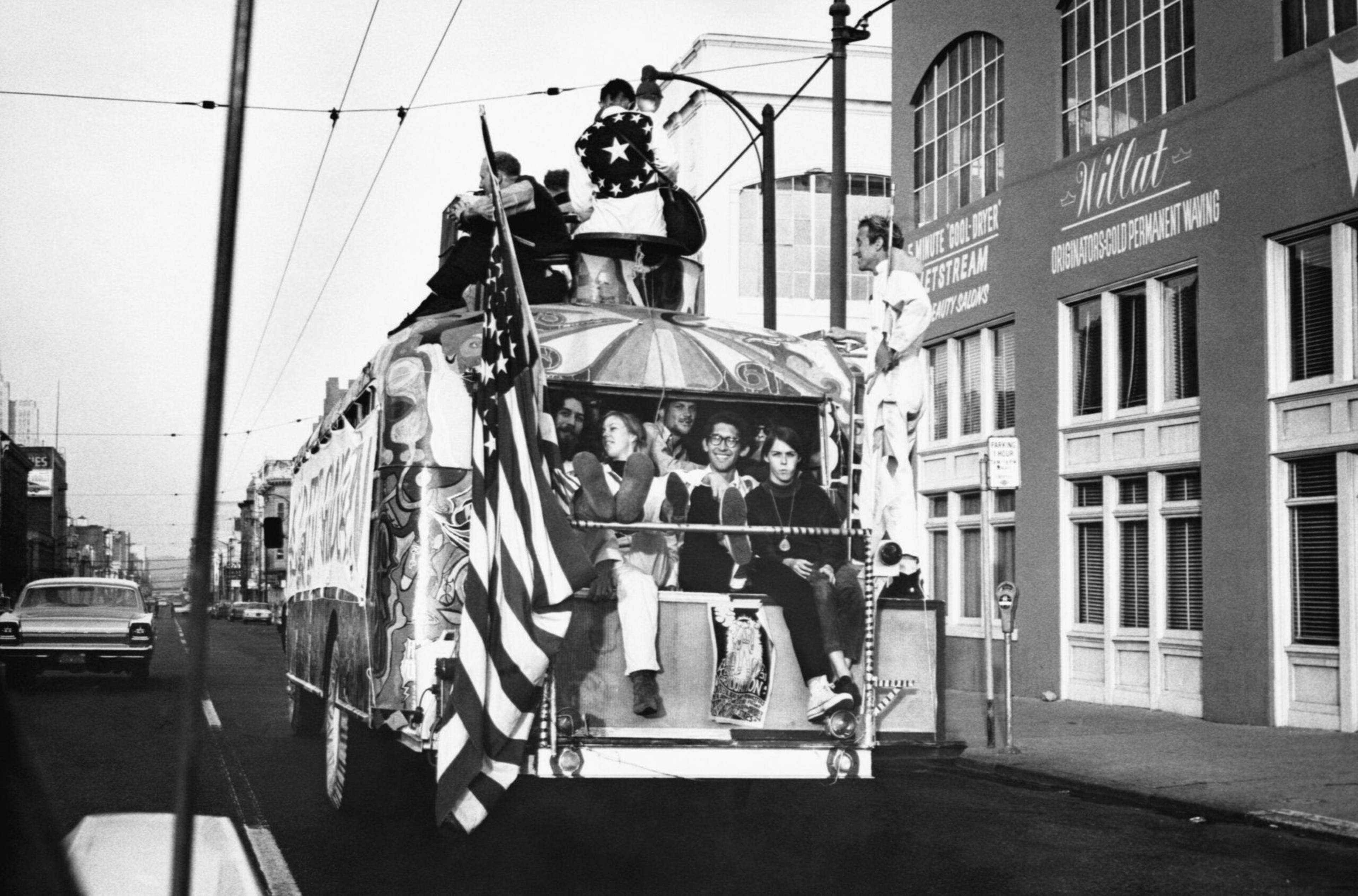
As part of the emerging “Back to the Land” movement and the experimental theater scene that created the San Francisco Mime Troupe, the Diggers saw food as a means to build collective social consciousness and social action. Much like the Black Panthers and other radical groups eventually did, the Diggers handed out free food every week in the Panhandle. For them, food was “free because it’s yours,” and they felt the same way about public space, which is why they decided to host a massive Halloween happening at Haight and Ashbury.
According to an article published days later (opens in new tab) in the underground newspaper The Berkeley Barb, the Diggers assembled on Oct. 31 to stage “The Full Moon Public Celebration of Halloween.”
The crowd that gathered on Haight Street wasn’t just made up of hippies. Curious San Franciscans passing by on buses deboarded and joined the audience. Trick-or-treating children paused their quest for candy to bear witness. The Diggers asked everyone to claim ownership of Haight Street by crossing at random angles, and soon enough, 600 or so people zigzagged the intersection.
Of course, the SF Police Department wasn’t far behind. They arrested several Diggers for blocking a public thoroughfare. Even in handcuffs, the thespians didn’t miss their cue. “I declare myself public. I am a public. The streets are public. The streets are free,” proclaimed one of the puppeteers.
In their recap, The Berkeley Barb warned, “If the fuzz read this story, they may know what was happening. It all depends on one’s frame of reference.”
This occupation of Haight-Ashbury is just one node on a long timeline of SF countercultural groups reclaiming public space. Most recently, hundreds of bicyclists took to the streets of Downtown SF for the 30th anniversary of Critical Mass (opens in new tab).In retrospect, the Diggers might’ve been better at stirring up Halloween mischief than the Merry Pranksters that night. According to The Berkeley Barb, the police couldn’t contain 600 people bouncing from corner to corner. The Diggers set up a portable phonograph, and a dance party ensued. Even with the arrests, they had resumed their free food program in the Panhandle within the week.
The trips, tricks and treats of Halloween 1966 proved to SF’s counterculture that there’s always strength in numbers. Before the next Halloween, 20,000 hippies had descended on Golden Gate Park for the Human Be-In (opens in new tab), 75,000 came together at Kezar Stadium to hear Coretta Scott King speak out against the Vietnam War and 100,000 or so more found their way to San Francisco for the Summer of Love.
